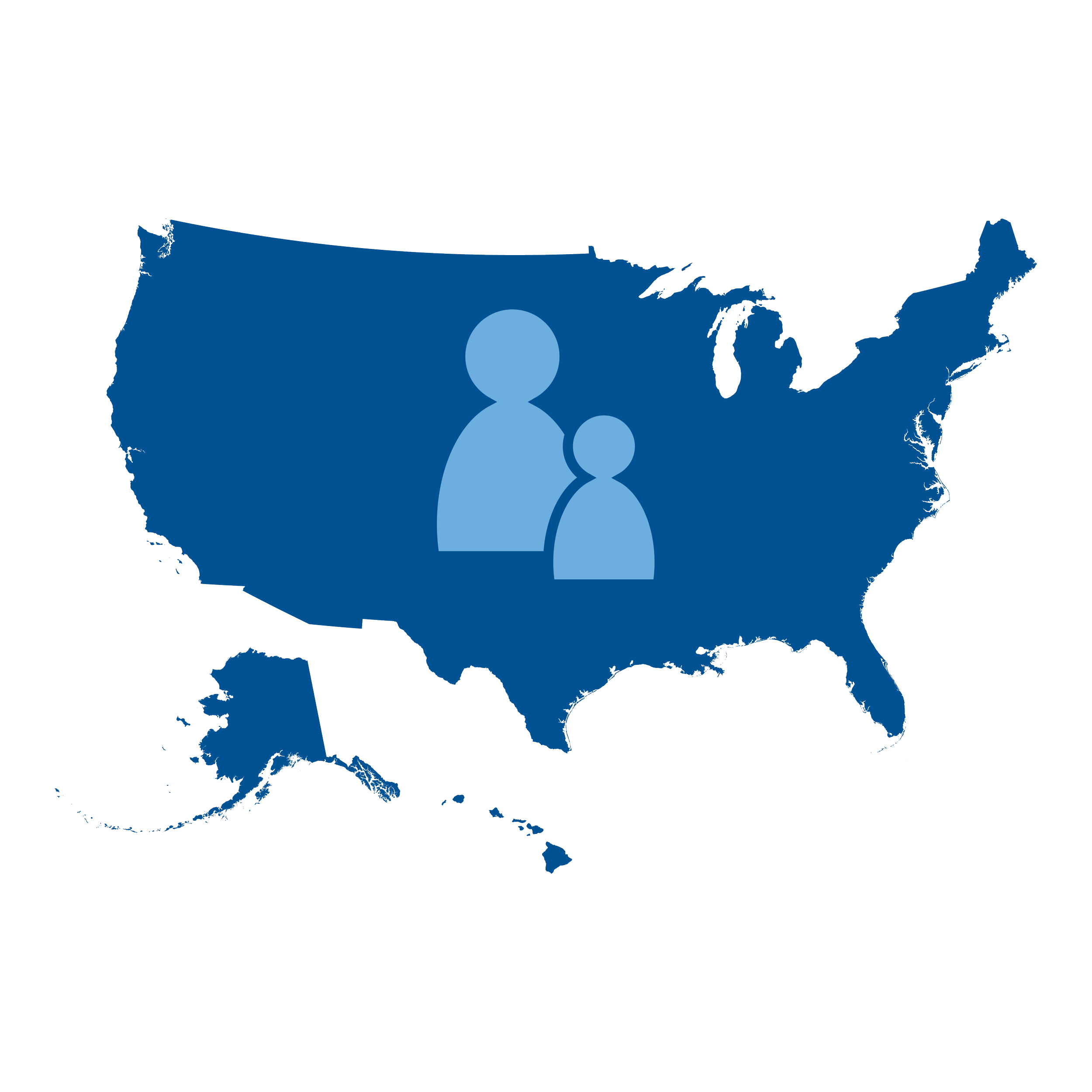
2020: A Year in Review
The COVID-19 pandemic created an ongoing economic crisis that has highlighted the strengths and shortfalls of our social policy and programs. Our expertise in measuring poverty and our work on income support has been especially salient in 2020. We also established a novel method of forecasting poverty throughout the COVID-19 crisis to help inform policy decisions in real-time. We released research on cash assistance, the Child Tax Credit, the impact of policy interventions and poverty projections during the COVID-19 crisis, and the state of poverty in New York City.

Monthly poverty will spike without CARES Act unemployment benefits
This report projects monthly poverty rate estimates for January 2021. It examines poverty in the U.S. depending on whether or not pandemic-related federal unemployment assistance continues past December 2020. We find that if the remaining unemployment provisions of the CARES Act expire at the end of 2020, the number of people in poverty in January 2021 will increase by approximately 4.8 million.

Food hardship in New York City is rising as New Yorkers wait for a second federal stimulus bill
The pandemic is intensifying food hardship, already a widespread problem in New York City for years. While earlier in the crisis, the CARES Act and food banks helped to stabilize rates, the Poverty Tracker reveals that food hardship is on the rise as temporary support wanes. In this prolonged crisis, millions of New Yorkers struggle to feed themselves and their families.

Despite the end of stop-and-frisk, Black New Yorkers continue to be over-policed
In New York City, the Poverty Tracker offers a unique view into how policing impacts communities on the ground. Despite efforts to reduce discriminatory policing practices, the Poverty Tracker shows that Black people and communities of color continue to experience high rates of police contact in the city.

Nearly half of New York City workers lost employment income due to the pandemic
The COVID-19 pandemic created an economic crisis that pushed the unemployment rate in New York City to roughly 20 percent. Poverty Tracker data illustrate how New Yorkers who were already in precarious economic positions bore the brunt of the initial economic fallout associated with COVID-19 and how New Yorkers of color are overrepresented among those who have endured losses.

Parental unemployment reaches historic highs during the COVID-19 pandemic
The COVID-19 pandemic has led to high rates of unemployment and hardship for families with children with potential long-term consequences for child well-being and development. Urgent policy action is likely needed to prevent long-lasting, detrimental effects on child well-being and development.

Parental unemployment reaches historic highs during the COVID-19 pandemic
The COVID-19 pandemic has led to high rates of unemployment and hardship for families with children with potential long-term consequences for child well-being and development. Urgent policy action is likely needed to prevent long-lasting, detrimental effects on child well-being and development.

Monthly poverty rates in the United States during COVID-19
This report presents monthly poverty rates in the U.S. before and throughout the Covid-19 pandemic. In contrast to measures of poverty based on a family’s annual resources, we project monthly poverty rates based on a family’s monthly resources. We find that the monthly poverty rate increased from 15% to 16.7% from February to September 2020.

The Poor People’s Campaign highlights the political power of low-income voters
Poverty and the concerns of poor and low-income Americans have not been directly addressed in recent election cycles. (There were 63 million low-income eligible voters in 2016.) The Poor People’s Campaign makes the case to put poverty on the political agenda as a moral imperative and a political strategy to win elections. In a recently released study, Columbia School of Social Work’s Robert Paul Hartley, a faculty affiliate of CPSP, provides evidence of what could happen if low-income people voted at similar rates as higher-income voters and where new participation could flip results.

CPSP joins poverty center directors in denouncing the racism in Lawrence Mead’s “Poverty and Culture”
Preview: A recent commentary, “Poverty and Culture,” written by Professor Lawrence Mead and published in Society, a journal edited by Jonathan Imber, has caused great concern and anger within the poverty research community. Directors of several poverty centers across the country signed on to a joint statement asserting that Professor’s Meads opinion is harmful to communities of color and does not reflect the current knowledge of the field. The article has since been retracted. A former group of poverty center directors called for renewed research on issues of poverty and race from the current generation of poverty researchers.

The CARES Act could reduce poverty to pre-crisis levels if access is adequate
In response to rapidly rising unemployment rates, Congress passed the Coronavirus Aid, Relief, and Economic Security Act, which included nearly $500 billion in direct income transfers for families across the country. In this brief, we apply new forecasting methods to project the effect of the CARES Act’s income transfers on poverty rates.

A better child tax credit during the COVID-19 crisis
The Child Tax Credit—one of the largest federal programs for children—can be made more generous, reach the one-third of children who are currently left out, and be delivered on a monthly basis to support children and families through the immediate crisis period and until the economy recovers.

Vulnerable workers in New York City are being left out of paid sick leave
New York City has been hit hard by COVID-19, highlighting the need for a robust paid sick leave policy to protect people’s health and their paychecks. Even through the patchwork of existing federal, state, and city laws, as well as new emergency crisis measures, many workers continue to lose pay. Using Poverty Tracker data, we find that workers who are not paid when they are sick are some of city’s most vulnerable workers.

Poverty in the United States could reach highest level in over 50 years
To what extent will the COVID-19 pandemic increase levels of poverty in the United States? In this brief, we apply a novel method for forecasting poverty rates in the United States using the Supplemental Poverty Measure (SPM) framework with a goal of providing projections of poverty rates throughout the COVID-19 crisis.

Families with children need cash during an economic crisis
The economic consequences of the ongoing COVID-19 pandemic are likely to be particularly severe for low-income households. The Supplemental Nutrition Assistance Program (SNAP) and Unemployment Insurance programs are critical because they can provide timely additional income support for families. However, they do not reach the majority of households with children who are in poverty or near-poverty. Moreover, while SNAP benefits help with food budgets, they cannot be used to cover other critical expenses. As schools and other institutions close, providing cash (through a child allowance or fully refundable Child Tax Credit) to families with children is one way to ensure that all low-income families can meet their basic needs.

Children in larger families are losing out on the Child Tax Credit
The Child Tax Credit is the largest federal expenditure on children, but one-third of all children do not reap the full benefit of this credit because they live in families whose earnings are not high enough to qualify. Building on our previous work, this brief examines the variation in Child Tax Credit receipt by family size. The findings show that children in larger families are more likely to be left out of the full credit than children in smaller families because the earnings required to access the full credit increases with the number of children in the family. Removing the earnings requirement embedded in the Child Tax Credit would produce a significant anti-poverty impact for children in all families, making the biggest difference for children in large families.

Guaranteed income can reduce poverty. Policy design matters.
The concept of a guaranteed income has resurged in public discourse in the United States as a potential anti-poverty policy. There are many ways to design policies to support low-income families, including hybrid financing models—such as tax reform plus carbon pricing—that could reduce poverty and inequality while also benefiting the environment. We evaluate recent proposals including a universal basic income, negative income tax, and child allowance, and we also show that a moderate guarantee of $250 per person per month could reduce poverty by 40%.
